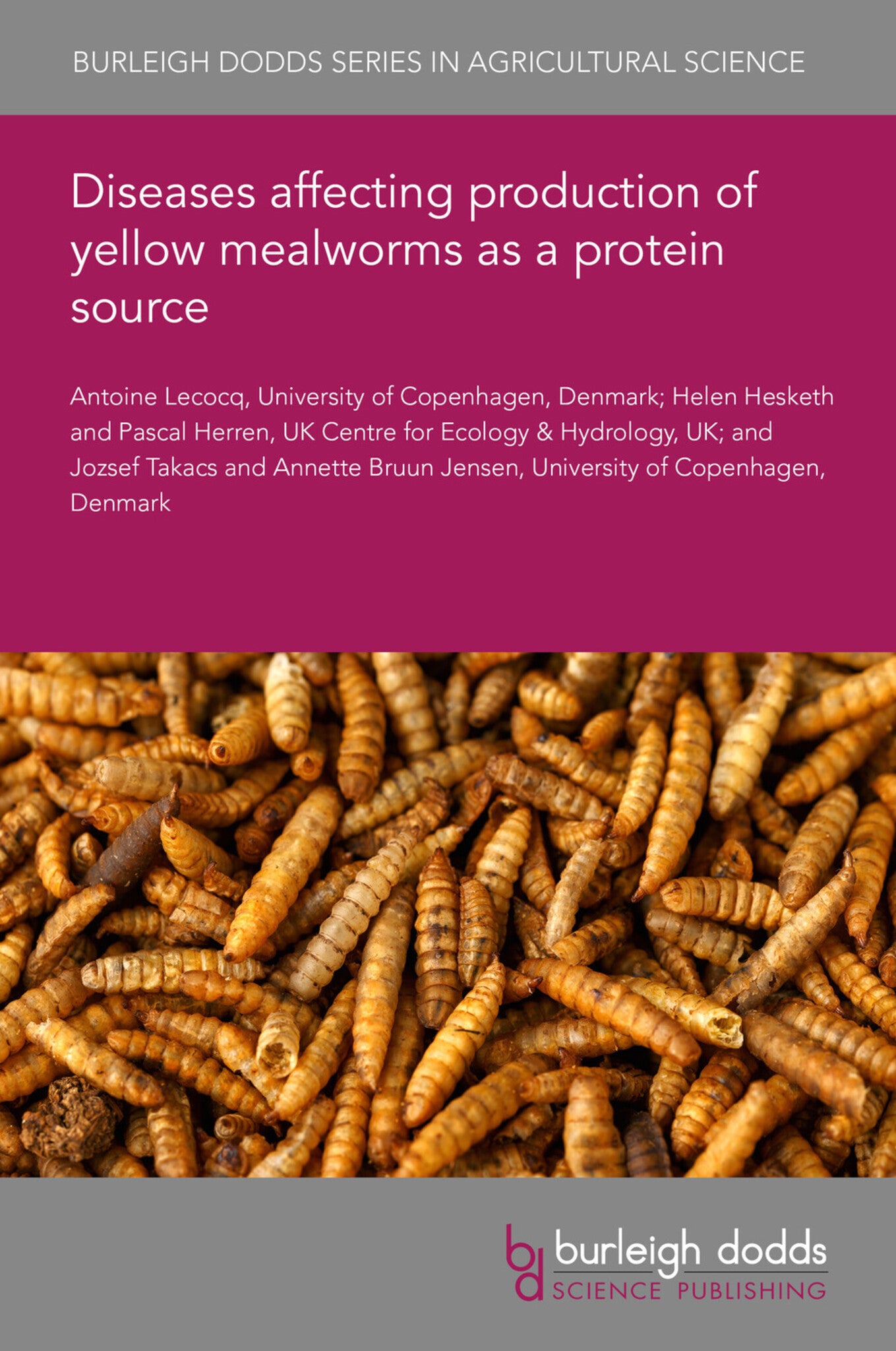We're sorry. An error has occurred
Please cancel or retry.
Diseases affecting production of yellow mealworms as a protein source

Some error occured while loading the Quick View. Please close the Quick View and try reloading the page.
Couldn't load pickup availability
- Format:
-
11 February 2025

Yellow mealworms, Tenebrio molitor, are increasingly being used as a source of protein for humans, as well as for feeding animals. However, as with any other type of livestock, yellow mealworms can be affected by diseases, which can lead to reduced productivity. In this chapter, the authors review recent research and describe common diseases that affect yellow mealworms and their causal agents, such as bacteria, fungi, viruses, and other pathogens like microsporidians, nematodes, and gregarines. Subsequently, they discuss methods that, both now and in the future, could play a role in controlling the pathogens. While there already exists protocols to facilitate the development of good hygienic practices, the authors also explore techniques with the prospects of improving insect immunity such as selective breeding, immune priming and the use of probiotics, all of which could protect the insects against existing and as yet unknown pathogenic threats.

TECHNOLOGY & ENGINEERING / Food Science / Chemistry & Biotechnology, Food and beverage technology, TECHNOLOGY & ENGINEERING / Food Science / Food Safety & Security, TECHNOLOGY & ENGINEERING / Pest Control, Food security and supply, Food chemistry, Pest control / plant diseases

- 1 Introduction
- 2 Pathogens of
- 3 Control of pathogens
- 4 Conclusion
- 5 Where to look for further information
- 6 References



